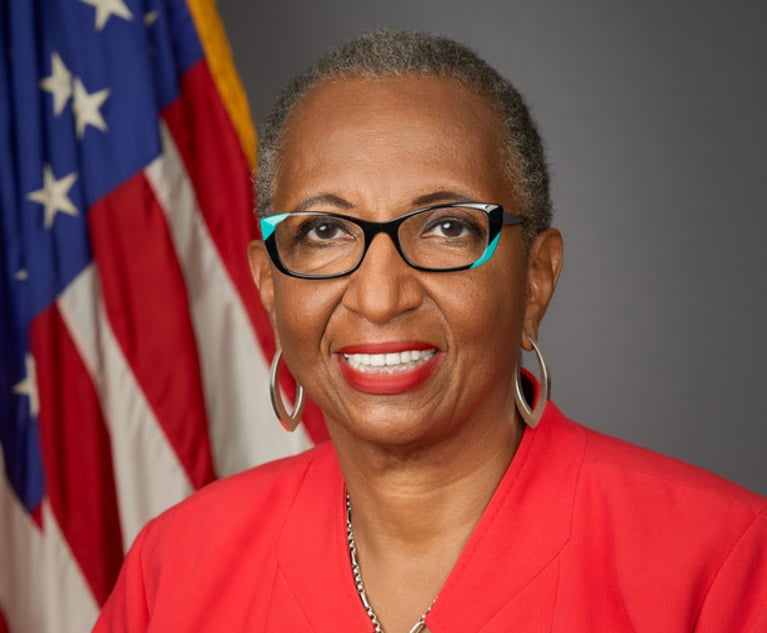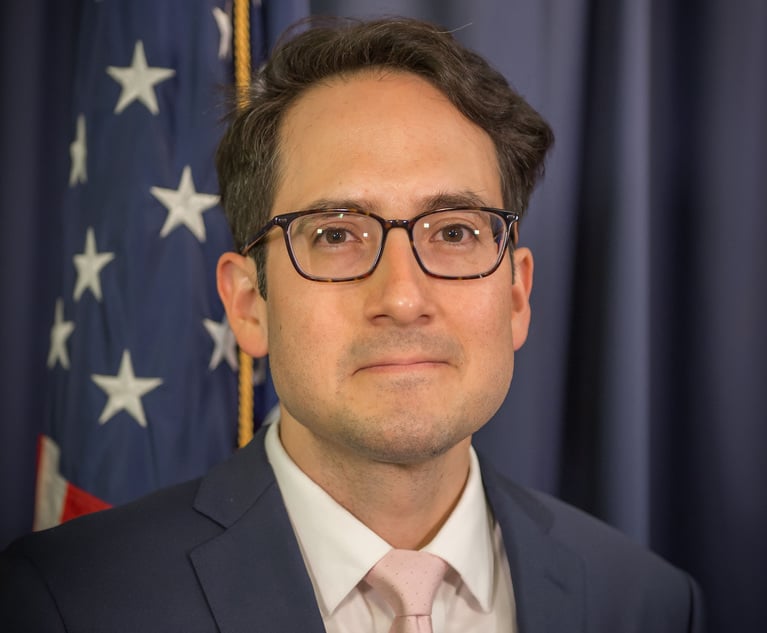Why China Is Still A Challenge for In-House IP Counsel
For most global companies, the need to think about how to protect intellectual property in China is an inevitable reality. For a few years, there have…
October 12, 2017 at 07:02 PM
5 minute read
The original version of this story was published on Law.com
For most global companies, the need to think about how to protect intellectual property in China is an inevitable reality. For a few years, there have been indications that the nation is willing to be more protective of IP owners' rights – from revisions to trademark law that aim to provide greater protection of IP and impose harsher penalties on infringers, to an unprecedented $1.5 million award to New Balance Athletics Inc. in a trademark dispute.
But recent events – such as the ordered investigation into China's alleged theft of IP and the country's inclusion on a priority watch list earlier this year by the Office of the United States Trade Representative because of IP concerns – signal there's still work to be done. These developments highlight that, despite small gains, protecting intellectual property in China can still be a major headache for companies and in-house attorneys.
There are positive developments, such as the New Balance award and the fact that China has created specialized IP courts, said Geoffrey Lin, managing partner of Ropes & Gray's Shanghai office, who focuses his practice on advising global companies on protecting intellectual property. But China remains a challenging environment for protecting intellectual property, at least in part, because “you're asking fairly young courts to interpret some challenging issues,” Lin said.
“Oftentimes, you have massive intellectual property disputes, but in many ways, the court systems are just getting their handle on how to properly adjudicate these disputes,” Lin added. “And sometimes, they don't necessarily come out with decisions that folks think are commensurate with the scale or potential harm that is happening.”
The amount of damage awards is one area where improvement is needed, Lin said. “If you truly respect IP…then damage awards should regularly be in the tens of millions of U.S. dollars, if not hundreds of millions of U.S. dollars,” according to Lin. He pointed to the example of trademark infringement cases, for which he said “there shouldn't be these kind of token awards of 50,000 U.S. dollars or 5,000 U.S. dollars.”
Asked whether this is likely to happen, Lin said it may not. It would really take “a lot of support” and “some risk-taking on the part of [China's] judges to really, you know, be trailblazers and pioneers in that space,” he explained.
It'd also be helpful to have a unified appellate IP court in China, so that all appeals go to one appellate court, Lin said. This, he added, is more realistic to expect and could happen as soon as in the next three to five years.
With respect to protecting trademarks, specifically, companies and counsel face a China Trademark Office that is “overwhelmed” with bad faith trademark applications and the office's examiners are ill-equipped to deal with this volume, said Daniel McKinnon, senior counsel for IP and global brand protection at New Balance, who spoke to Corporate Counsel about the company's $1.5 million award in late August.
“Because of the volume of trademarks that are being applied for in China…[examiners] simply do not have the time to do the proper analysis,” McKinnon said. “Basically, it's putting the onus on the brand holder to really, really tightly police the trademark office.”
This is compounded by the fact that it's difficult for legitimate right holders to oppose or invalidate marks, according to McKinnon, which he said is problematic in light of China's first-to-file system, which gives priority to whoever files an application first.
“It used to be the case that we would win the vast majority of our oppositions. However, now, as the examiners are overwhelmed, the people now handling the opposition matters are overwhelmed. It's a domino effect,” McKinnon said. “The filter is just breaking down.”
Companies looking to tap into the Chinese market also have to deal with requirements that U.S. firms develop their IP in China or transfer their IP to Chinese entities as a condition to accessing the market, according to the USTR report.
As for how companies and their law departments can mitigate these risks, Lin said, “practical by far trumps legal.” While legal steps taken to protect IP are critical, such as proper contracting and taking action against infringers when necessary, the practical protections go further, noted Lin.
For trademarks, this can mean doing searches and filing for marks early. For copyrighted, trade secreted and patented technology, an effective way to handle the risks is by black-boxing part of the technology so there still some “control of part of your technology,” Lin said.
“If you expect to provide all of your technology from start to finish with the Ikea manual on how to make everything and make it work efficiently and at scale, and you're relying on well-drafted contracts as your only recourse, it's very challenging,” he said. Having control of some component of the technology, he added, is a “better way.”
This content has been archived. It is available through our partners, LexisNexis® and Bloomberg Law.
To view this content, please continue to their sites.
Not a Lexis Subscriber?
Subscribe Now
Not a Bloomberg Law Subscriber?
Subscribe Now
NOT FOR REPRINT
© 2025 ALM Global, LLC, All Rights Reserved. Request academic re-use from www.copyright.com. All other uses, submit a request to [email protected]. For more information visit Asset & Logo Licensing.
You Might Like
View All
State AG Hammers Homebuilder That Put $2,000-Per-Day Non-Disparagement Penalty in Buyer Contracts
3 minute read
Fired NLRB Member Seeks Reinstatement, Challenges President's Removal Power

GOP-Led SEC Tightens Control Over Enforcement Investigations, Lawyers Say

GOP Now Holds FTC Gavel, but Dems Signal They'll Be a Rowdy Minority
6 minute readTrending Stories
- 1States Accuse Trump of Thwarting Court's Funding Restoration Order
- 2Microsoft Becomes Latest Tech Company to Face Claims of Stealing Marketing Commissions From Influencers
- 3Coral Gables Attorney Busted for Stalking Lawyer
- 4Trump's DOJ Delays Releasing Jan. 6 FBI Agents List Under Consent Order
- 5Securities Report Says That 2024 Settlements Passed a Total of $5.2B
Who Got The Work
J. Brugh Lower of Gibbons has entered an appearance for industrial equipment supplier Devco Corporation in a pending trademark infringement lawsuit. The suit, accusing the defendant of selling knock-off Graco products, was filed Dec. 18 in New Jersey District Court by Rivkin Radler on behalf of Graco Inc. and Graco Minnesota. The case, assigned to U.S. District Judge Zahid N. Quraishi, is 3:24-cv-11294, Graco Inc. et al v. Devco Corporation.
Who Got The Work
Rebecca Maller-Stein and Kent A. Yalowitz of Arnold & Porter Kaye Scholer have entered their appearances for Hanaco Venture Capital and its executives, Lior Prosor and David Frankel, in a pending securities lawsuit. The action, filed on Dec. 24 in New York Southern District Court by Zell, Aron & Co. on behalf of Goldeneye Advisors, accuses the defendants of negligently and fraudulently managing the plaintiff's $1 million investment. The case, assigned to U.S. District Judge Vernon S. Broderick, is 1:24-cv-09918, Goldeneye Advisors, LLC v. Hanaco Venture Capital, Ltd. et al.
Who Got The Work
Attorneys from A&O Shearman has stepped in as defense counsel for Toronto-Dominion Bank and other defendants in a pending securities class action. The suit, filed Dec. 11 in New York Southern District Court by Bleichmar Fonti & Auld, accuses the defendants of concealing the bank's 'pervasive' deficiencies in regards to its compliance with the Bank Secrecy Act and the quality of its anti-money laundering controls. The case, assigned to U.S. District Judge Arun Subramanian, is 1:24-cv-09445, Gonzalez v. The Toronto-Dominion Bank et al.
Who Got The Work
Crown Castle International, a Pennsylvania company providing shared communications infrastructure, has turned to Luke D. Wolf of Gordon Rees Scully Mansukhani to fend off a pending breach-of-contract lawsuit. The court action, filed Nov. 25 in Michigan Eastern District Court by Hooper Hathaway PC on behalf of The Town Residences LLC, accuses Crown Castle of failing to transfer approximately $30,000 in utility payments from T-Mobile in breach of a roof-top lease and assignment agreement. The case, assigned to U.S. District Judge Susan K. Declercq, is 2:24-cv-13131, The Town Residences LLC v. T-Mobile US, Inc. et al.
Who Got The Work
Wilfred P. Coronato and Daniel M. Schwartz of McCarter & English have stepped in as defense counsel to Electrolux Home Products Inc. in a pending product liability lawsuit. The court action, filed Nov. 26 in New York Eastern District Court by Poulos Lopiccolo PC and Nagel Rice LLP on behalf of David Stern, alleges that the defendant's refrigerators’ drawers and shelving repeatedly break and fall apart within months after purchase. The case, assigned to U.S. District Judge Joan M. Azrack, is 2:24-cv-08204, Stern v. Electrolux Home Products, Inc.
Featured Firms
Law Offices of Gary Martin Hays & Associates, P.C.
(470) 294-1674
Law Offices of Mark E. Salomone
(857) 444-6468
Smith & Hassler
(713) 739-1250






